Julian Stair OBE
Ossuaries 2024
“These ossuaries commemorate the flora and fauna of a past world. They contain the archaeological remains of wondrous beasts that lived a million years ago, and are made from the clay in which the vestiges of their lives – mineralised bone, ivory, a mammoth’s tooth – have been preserved.” Julian Stair
To make an enquiry about these works please email robert@realworldconservation.org.uk
 Ossuary for Megafauna 1, 2024
Ossuary for Megafauna 1, 2024
Ostend Till, hand built, contemporary flora ash
Southern Mammoth tooth, c. 1,200,000 BCE
Steppe Mammoth tooth fragment, c. 8000,000 BCE
Cave Bear Jaw, c. 1,500,000 to 1,200,000 BCE
Straight-Tusked Elephant tooth fragment, c. 400,000
Fragment of Woolly Mammoth skull, c. 40,000
Steppe/Southern Mammoth tusk fragment, c. 1,000,000
15 x 39 x 29 cm
£18,000
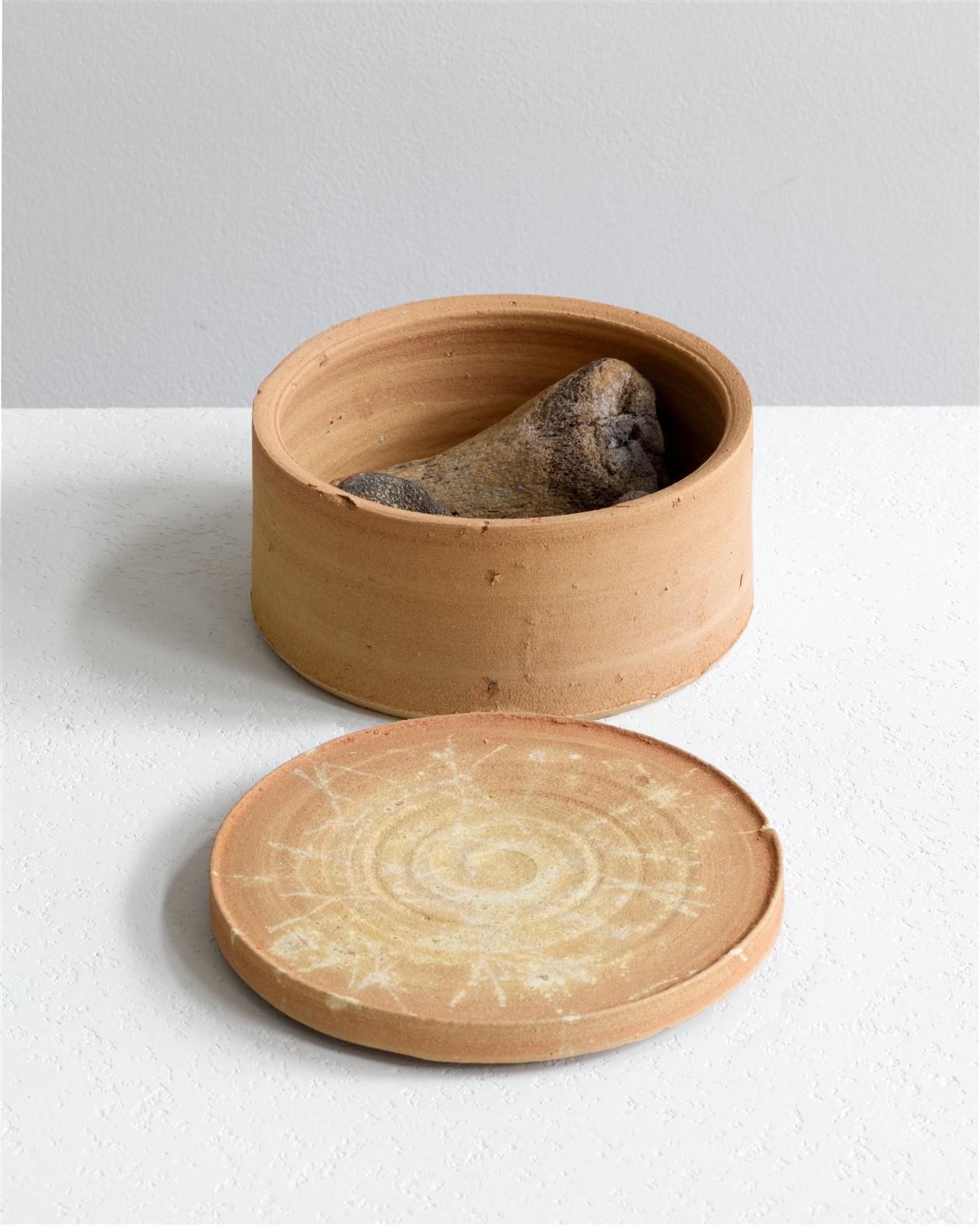
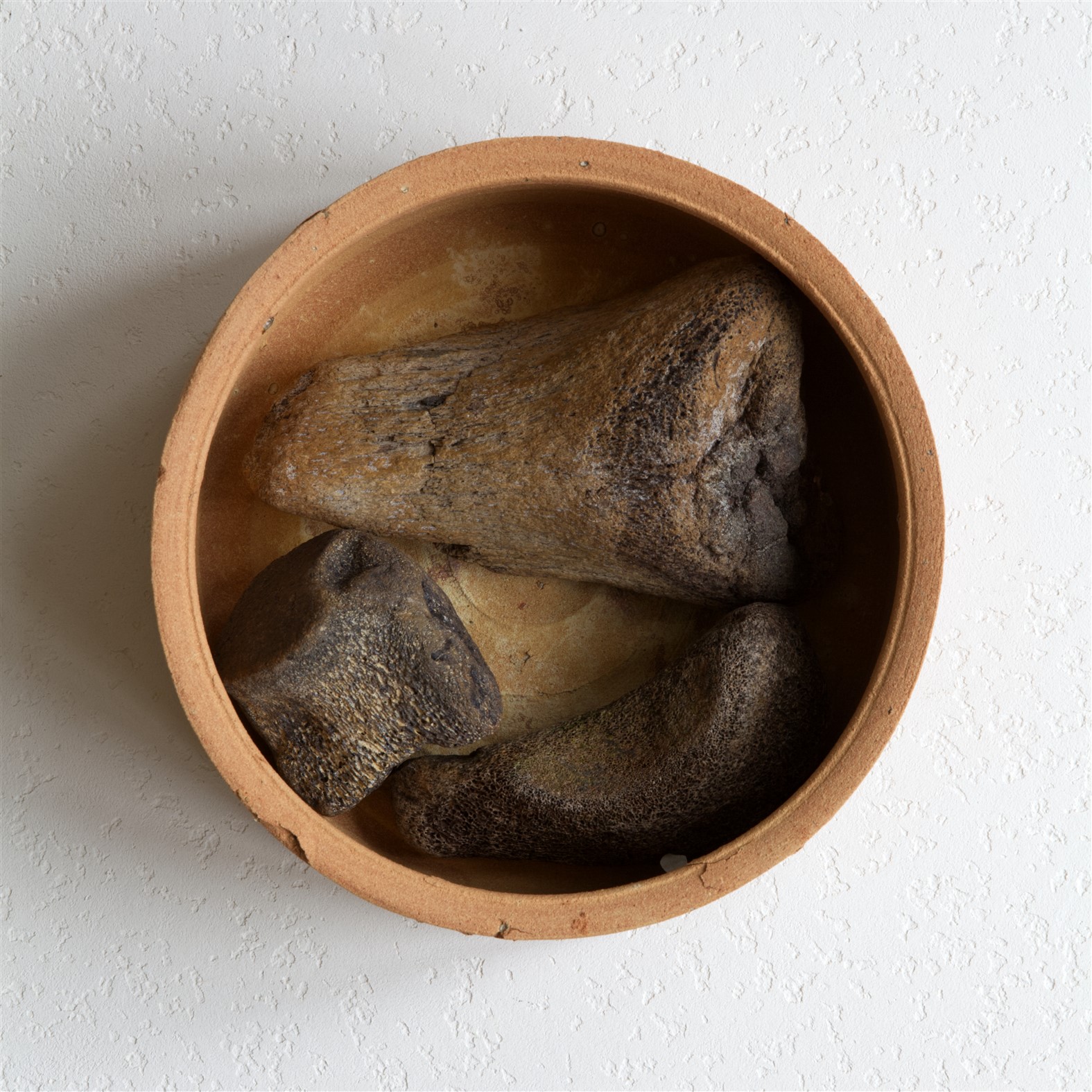 Thrown Happisburgh Till, wood ash shadow from contemporary flora.
Thrown Happisburgh Till, wood ash shadow from contemporary flora.
Three fragments of mineralised rhino bones, c. 500,000 BCE
11.5 x 21 x 21 cm
£12,000

 Thrown Ostend Till, mineralised horse bone (c. 400,000 BCE) natural flint, flux and wood (800,000 BCE).
Thrown Ostend Till, mineralised horse bone (c. 400,000 BCE) natural flint, flux and wood (800,000 BCE).
11.5 x 16 x 16 cm
£10,000
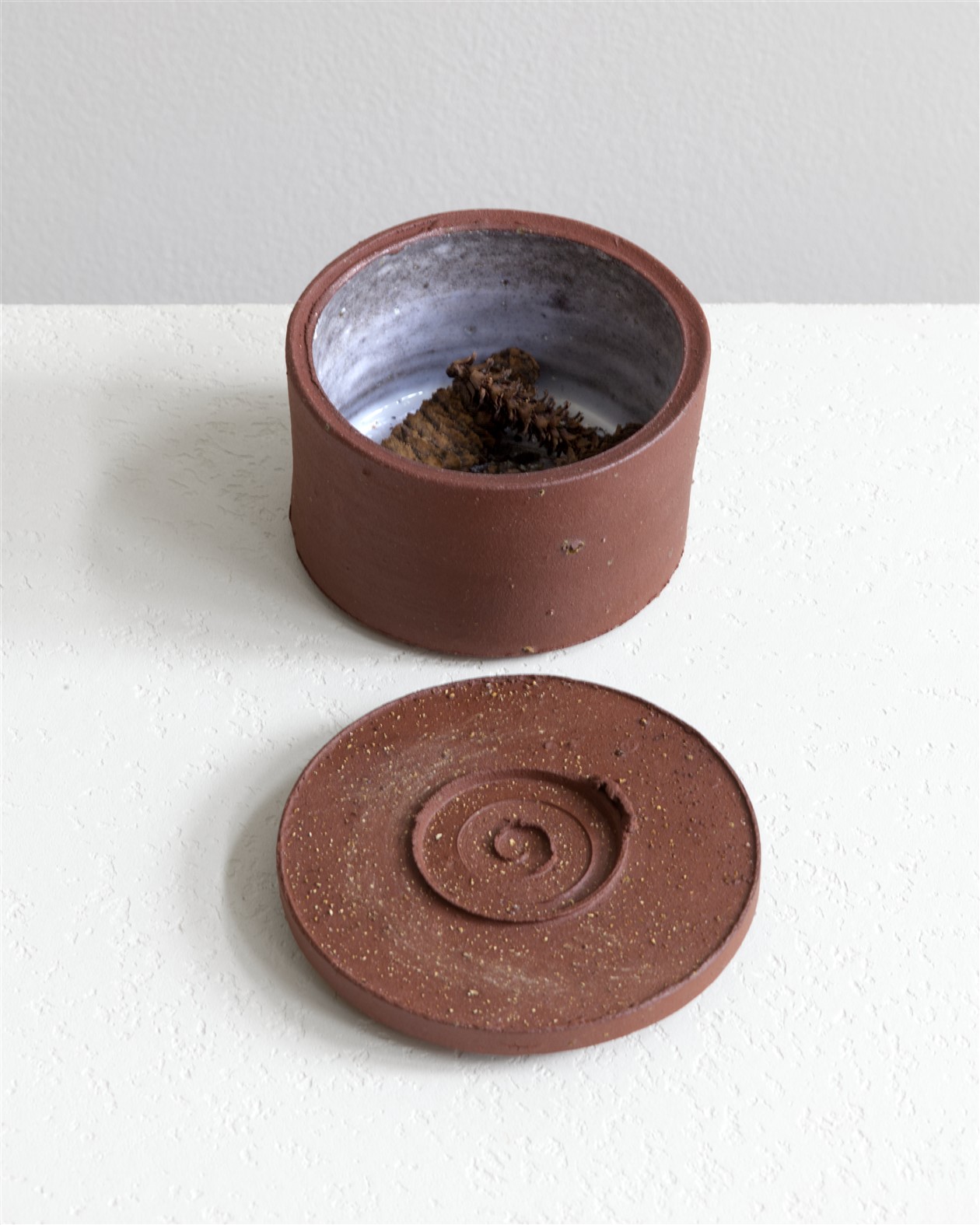
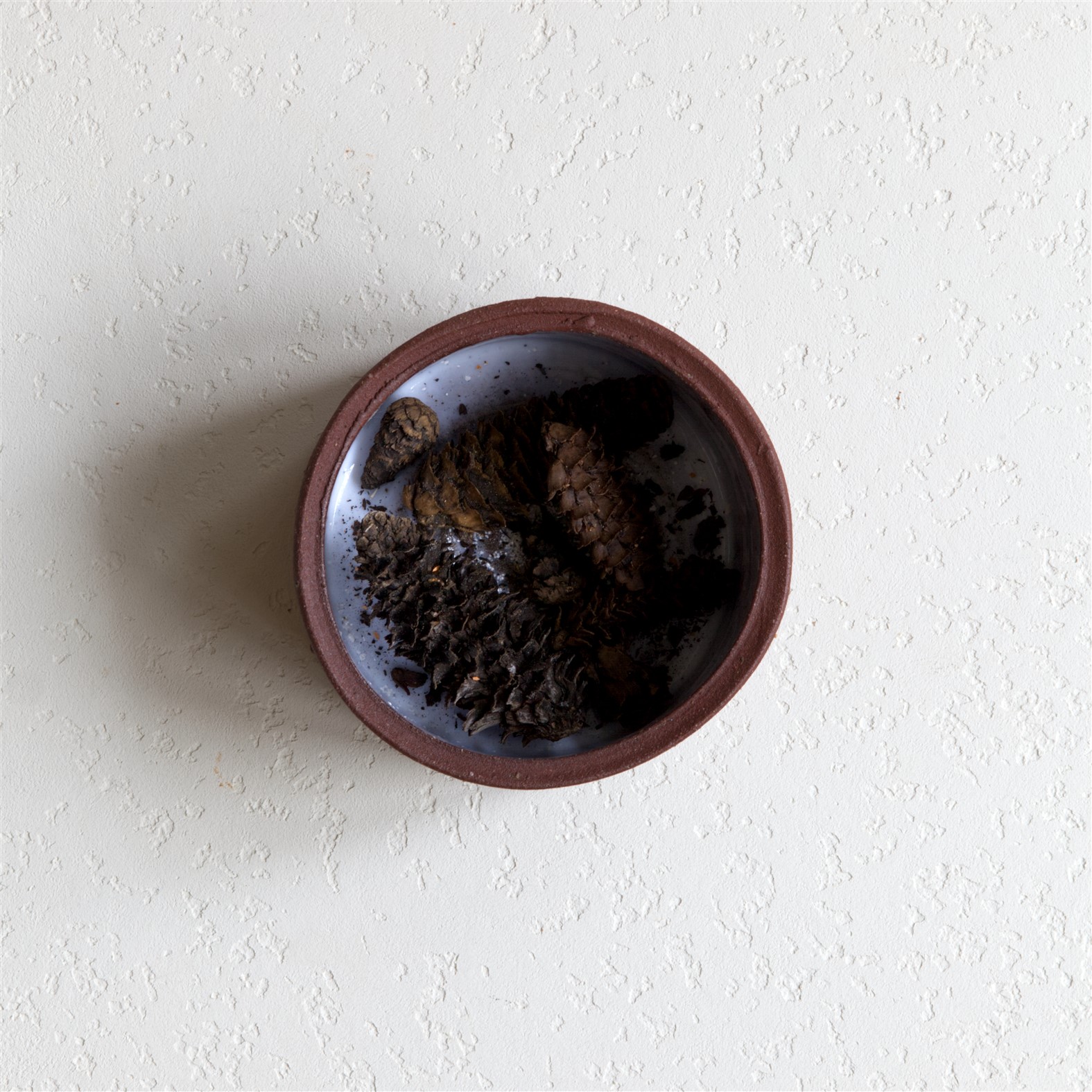 Thrown Happisburgh Till, pine cones (800,000 BCE), natural flint, flux. Pine cones dating to c.800,000 BCE recovered from below the glacial deposits at Happisburgh.
Thrown Happisburgh Till, pine cones (800,000 BCE), natural flint, flux. Pine cones dating to c.800,000 BCE recovered from below the glacial deposits at Happisburgh.
8 x 13 x 13 cm
£8,000
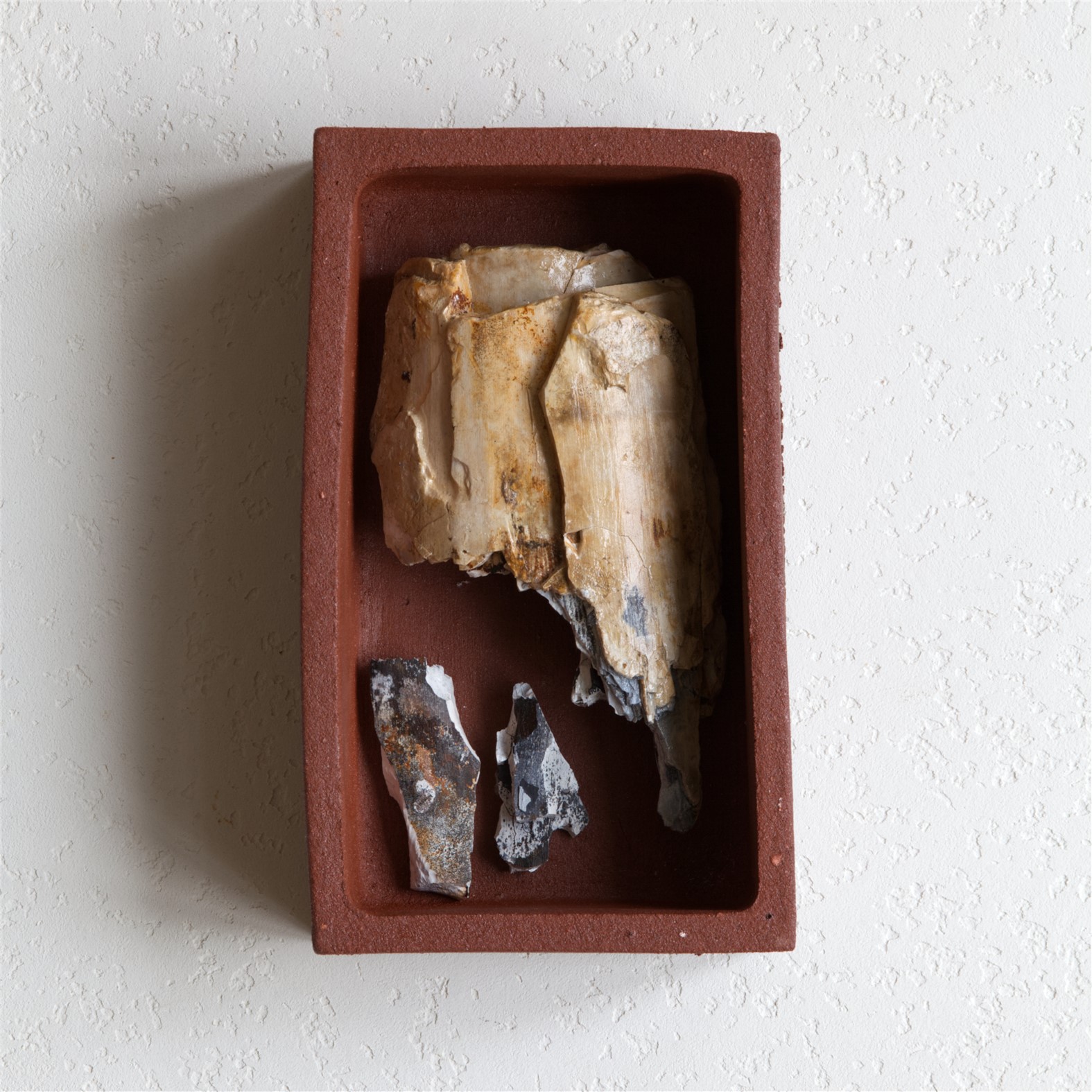
 Hand-built Happisburgh Till, Mammoth Ivory (800,000 – 1.2 million BCE), flux and mineralised mammoth bone (800,000 BCE).
Hand-built Happisburgh Till, Mammoth Ivory (800,000 – 1.2 million BCE), flux and mineralised mammoth bone (800,000 BCE).
8 x 22 x 14 cm
£12,000
- Mammoth Ivory is for display only. It is not included in the sale of the Lot.
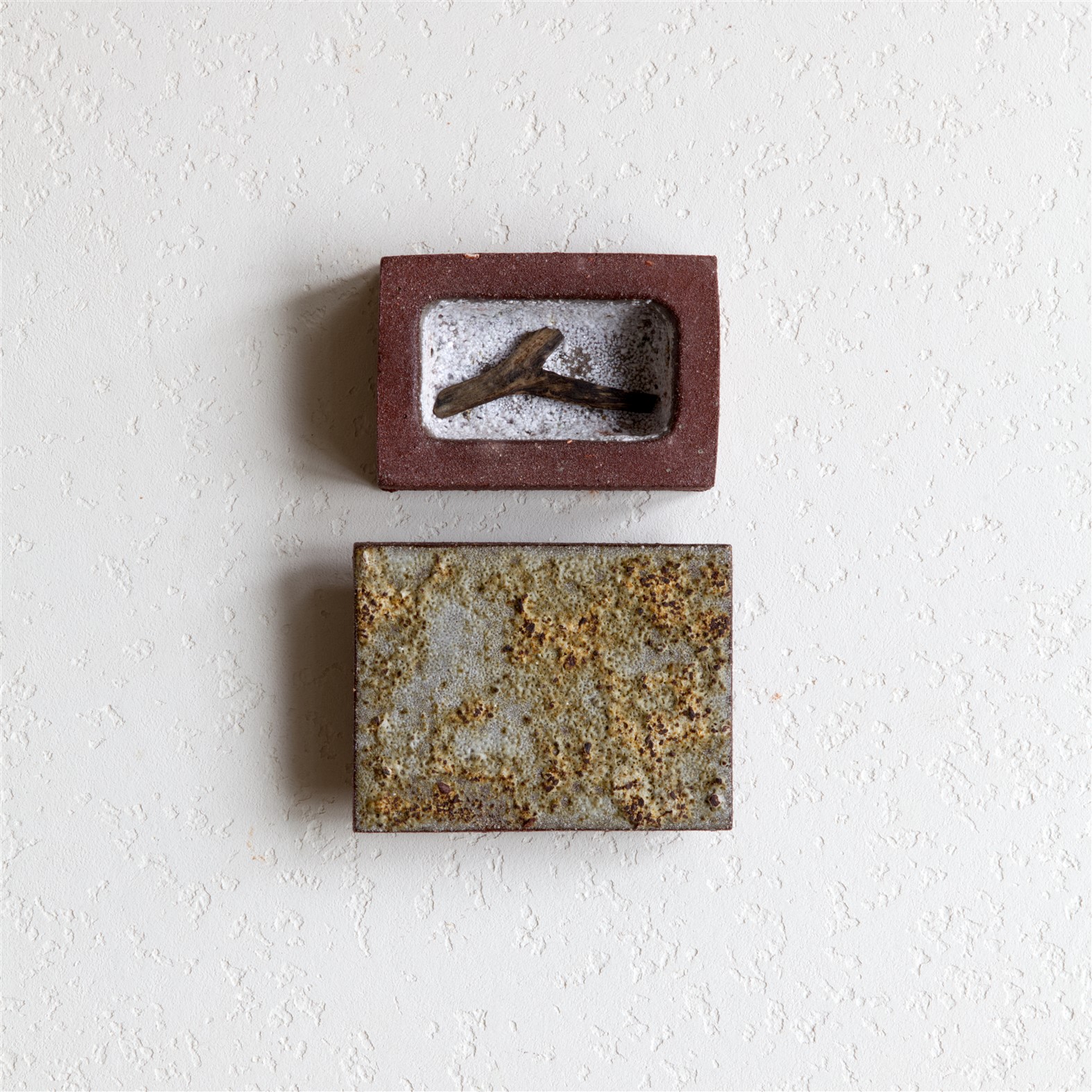 Hand built Happisburgh Till, fragment of wood (800,000 BCE), flux and mineralised bone (800,000 BCE).
Hand built Happisburgh Till, fragment of wood (800,000 BCE), flux and mineralised bone (800,000 BCE).
5 x 10 x 7.5 cm
£5,000
Listen to Julian Stair explaining his Ossuary series:
Julian Stair is a prominent British ceramic artist recognized for his minimalist yet profoundly expressive vessels that explore themes of containment, memory, and the human experience. Known for his mastery of both traditional and experimental pottery techniques, Stair creates work that often blurs the line between art and function. His vessels range from small, finely crafted cups and jars to large, imposing urns, all executed with a refined aesthetic that celebrates the inherent qualities of his chosen materials—often earthy clays and muted glazes that emphasize texture and form. Stair’s works are frequently inspired by ancient pottery, yet they carry a contemporary sensibility that speaks to both universal human themes and modern sensibilities.
A central theme in Stair’s work is the notion of containment, particularly as it relates to life and mortality. His vessels often resemble urns, reliquaries, and other traditional forms used to hold and protect precious substances, including the human body itself. This exploration is perhaps most evident in his project *Quietus*, which was created as a response to the themes of death and remembrance. This series consists of funeral urns, cinerary jars, and sarcophagi in various shapes and sizes, made from terracotta and stoneware. Through *Quietus*, Stair considers how ceramics have been used for millennia to hold human remains, inviting reflection on the rituals surrounding death, the dignity of the human body, and how art can honor life’s transience. The work was exhibited in locations including the British Museum, where it resonated with audiences as a contemplative exploration of mortality and the human connection to earth.
Stair’s technique is both traditional and experimental. His vessels are wheel-thrown and hand-built, using natural and locally sourced clays that impart an organic, earthy quality to his pieces. His surfaces are often unglazed or treated with simple slips and oxides, lending a sense of purity and honesty to the form. This material-focused approach emphasizes the tactile nature of clay, allowing his vessels to feel grounded and substantial. The restrained aesthetic also reflects Stair’s philosophical approach to ceramics, where function and form are intimately connected, and each piece is a meditative exploration of craft and purpose.
In addition to his work as an artist, Stair is an influential writer and lecturer, contributing to the field of ceramics with scholarly insights into the history and significance of pottery in human culture. His work has been exhibited internationally, and he is widely regarded as a key figure in contemporary ceramics, celebrated for his ability to imbue simple forms with profound meaning and for his dedication to honoring the history and emotional depth of the ceramic medium.


